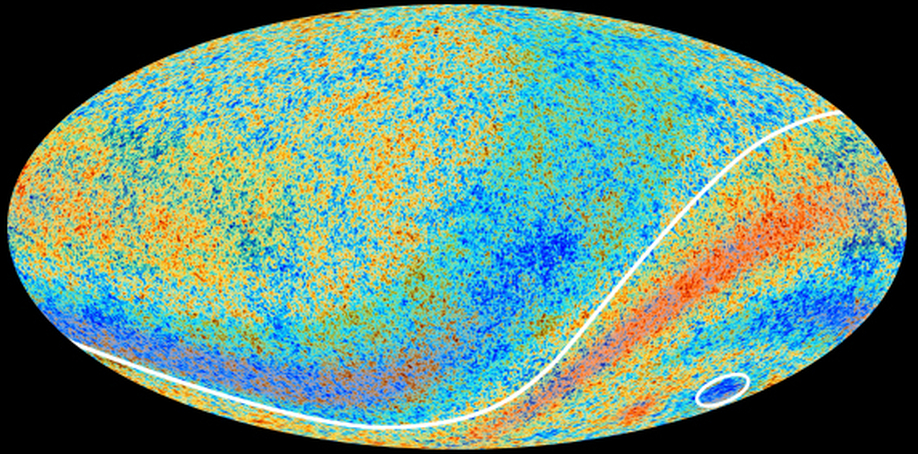
 Credit: ESA Planck Collaboration
Credit: ESA Planck Collaboration
Mystery Spot
Incredibly small variations of the temperature of the Universe are the seeds from which the largest structures have grown. Extremely precise maps of these variations by the COBE, WMAP and Planck satellites have helped cosmologists understand how the Universe evolved from a hot, dense smooth state to the cold, lumpy state we see locally. The image above is a map of these temperature fluctuations, at the scale of 1/1000th of a degree. Red regions are areas where the temperature is a little hotter, while blue regions are areas where the temperature is a little colder. Near the bottom right of the image, near the south pole of the image, is a region cosmologists have dubbed the "cold spot" (shown by the white circle), a larger-than-expected area of unusually cold cosmic temperature. The existence of this cold spot was puzzling, and explanations of it ranged from a problem in the statistical analysis of the data to the influence of an entirely separate universe on our own. Now astronomers think they may have an explanation for the cold spot. Astronomers have shown that the cold spot seems to be associated with a large void in that region of space, a hole in the cosmic web, where few visible galaxies can be seen. Because of the expansion of the Universe, light loses energy passing through the void, corresponding to a slightly reduced radiation temperature in this area. If confirmed, this void would be the largest structure ever identified.
Published: May 4, 2015
<
HEA Dictionary ● Archive
● Search HEAPOW
● Other Languages
● HEAPOW on Facebook
● Download all Images
● Education ● HEAD
>

Each week the HEASARC
brings you new, exciting and beautiful images from X-ray and Gamma ray
astronomy. Check back each week and be sure to check out the HEAPOW archive!
Page Author: Dr. Michael F. Corcoran
Last modified Monday, 26-Feb-2024 17:34:43 EST


